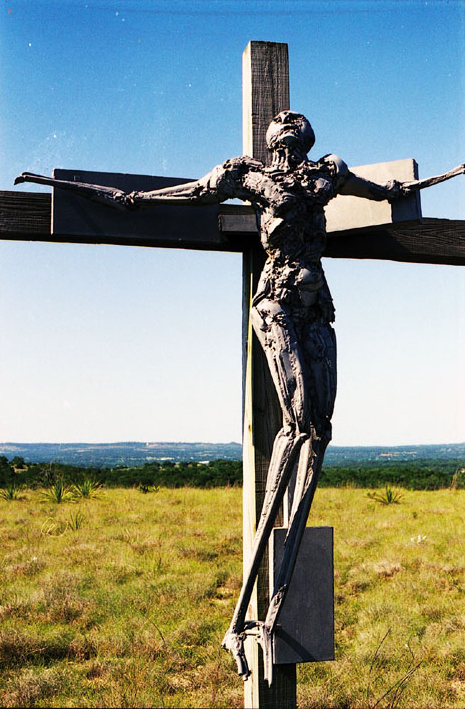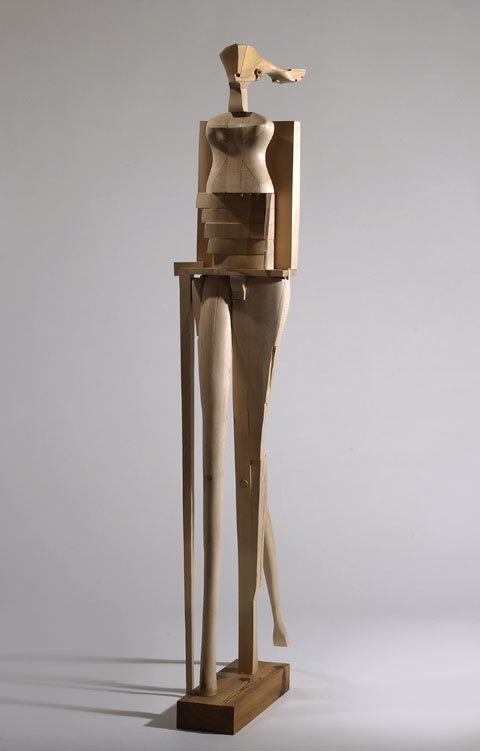|
|
|
|
|
|
|
|
|
|
|
|
|
|
|
|
|
|
|

|
Artist's Biography Exhibition Checklist Back to Evett Exhibition Past Exhibitions 
 (Left) Celebration, 1999. Cast bronze, 22 x 8 x 8 in.
(Left) Celebration, 1999. Cast bronze, 22 x 8 x 8 in.(Right) Celebration, 1999. Cast bronze with mahogany base, 24 1/8 x 8 x 8 in. (Photo: Ansen Seale)  Truth, 2002. Maple with pine base, 84 3/4 x 15 x 32 1/2 in. (Photo: Ansen Seale)
Truth, 2002. Maple with pine base, 84 3/4 x 15 x 32 1/2 in. (Photo: Ansen Seale)
|
Philip John Evett: The Aura of the Past/Future February 5–April 18, 2004 Philip John Evett: An Extraordinary Artist
What a pleasure it is to write a few words about the work of Philip John Evett, an extraordinary artist. For more than 50 years as a dealer, I have exhibited the work of sculptors of international fame, but until recently had totally missed this talent who was practically working in my backyard. Qualifying my judgement with the best in the field, I place Philip Evett's work among the best of 20th- and 21st-century sculptors.
In 1938, I met Alexander Archipenko (1887-1964) in his studio in Chicago, where he was experimenting with unconventional materials. He was one of the first sculptors to explore the possibilities of concave surfaces and voids, and his work left an everlasting impression on me. Later, Elie Nadelman (1882-1946) combined these possibilities with his wit and produced work with qualities of directness, accessibility and blunt grandeur.
Philip Evett has done the same in his own unique way. Using maple, cedar, mahogany and oak, he carves in sections that he then assembles like a tightly joined three-dimensional puzzle. His anthropomorphic forms fit together with unnerving precision - craftsmanship at its best. A torso may be part cedar and oak joined with thighs of mahogany and maple. Branches with multiple limbs can suggest head, arms or legs. His sculptures appear like strange mannequins, often with humor. His female figures are most outstanding. They are either standing, walking, sitting or reclining as in traditional sculpture. His distinct design and construction, however, give these figures a haunting, and surprisingly pleasant, quality. The resulting texture of the work is totally inventive and delights the eye. The colors and, particularly, the grains of different woods play a subtle but important role in the overall composition as they express both volume and movement in his sculptures. They are at times almost joyous, exuding some unfathomable charm and eliciting a smile from the viewer. The subtleties offered make it truly worthwhile for the viewer to spend time getting acquainted with his pieces.
Philip Evett stands alone in the artistic choices he has made and the style he has created. His works are deserving of national exposure and international acclaim. May you enjoy the pleasure I have found in them.
(Donald S. Vogel, the founder of Valley House Gallery and a legendary art professional in Dallas, passed away suddenly on February 17, 2004, before this publication went to press.)
by Donald S. Vogel Past Exhibitions | Current Exhibitions | Future Exhibitions | Back to Exhibitions |